What We've Learned
The unprecedented past 12 months in sports call for a break from the usual conversations, so this sports talk won’t involve players, coaches or even commissioners. While the COVID-19 story became a sports story, a business story, a schooling story and unfortunately a political story, at its heart it’s always been a medical story, so this discussion of where we’ve been, how it’s gone and what comes next brings us to Dr. Leroy Sims and Dr. John DiFiori.
Sims, who works in the emergency room at Mills-Peninsula Medical Center in Burlingame, Calif., is the NBA’s medical director. DiFiori, who treats sports-related injuries at Hospital for Special Surgery in New York, is the NBA’s director of sports medicine. They helped devise the league’s COVID-19 protocols, including the highly successful bubble. They can chart the progress from the initial phases of the pandemic, when even the medical experts were grasping in the dark. And they can provide the new definition of success. It’s no longer about seeking victory. It’s about reducing risk and minimizing loss. Despite the 51 cases that have hit NBA players since the season began, leading to the postponement of 31 games by the All-Star break, the ultimate tally for Sims is the zero lives lost to COVID-19 among the NBA personnel operating under the guidelines he helped create.
“As the E.R. doctor, I think about what's the worst-case scenario,” Sims says. “We haven't had the worst-case scenario, and we're playing the majority of our games. That's so reassuring.”
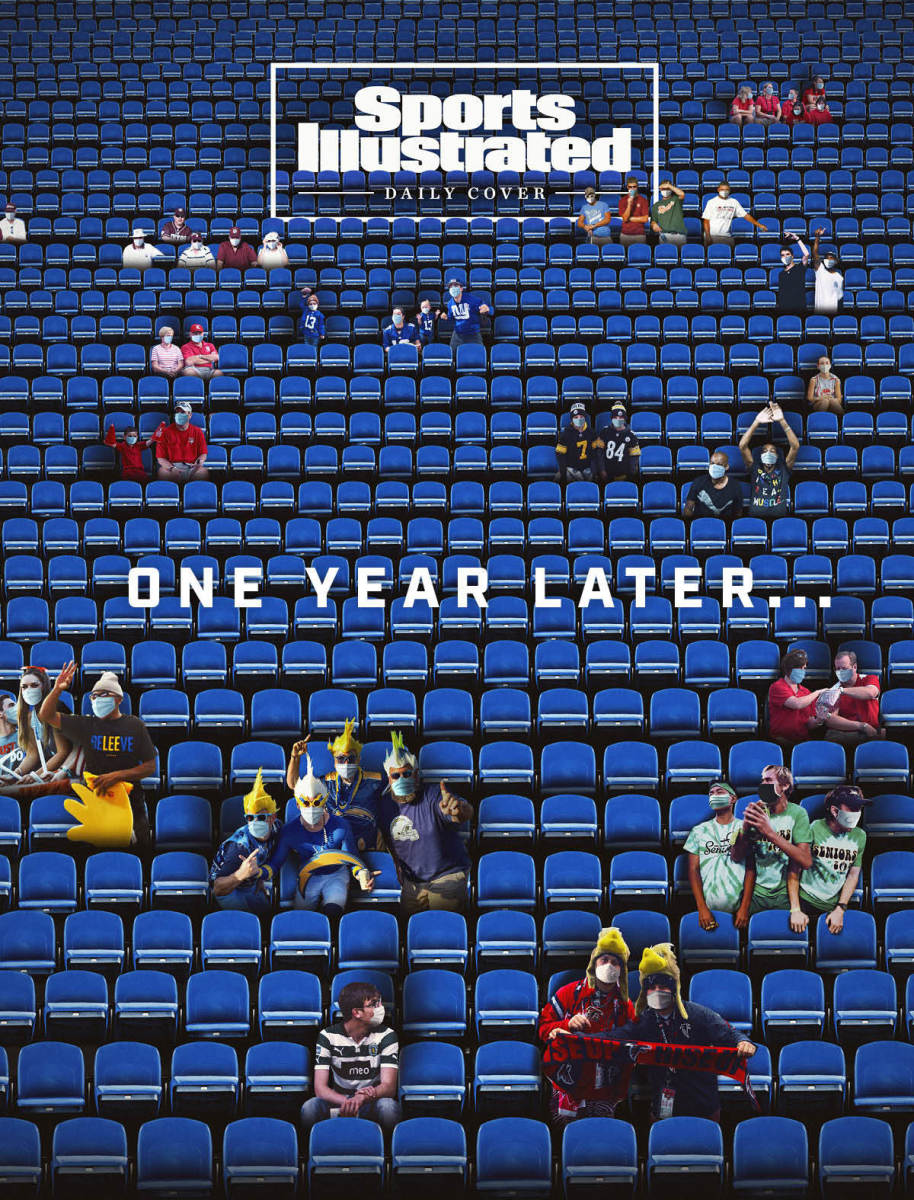
It’s more a sense of relief than triumph. Satisfaction through mitigation. So much progress from where they were a year ago when, as DiFiori says, “We were by no means experts.”
The belief by many at the outset of the pandemic was that thermometers and thermal scans could keep us safe from the novel coronavirus, without understanding that asymptomatic carriers were driving the spread. Tests for the virus weren’t readily available (especially if you didn’t play in the NBA), and results took several days to return. Vaccines were still months away. There were no mask mandates. And yet the NBA felt the necessity to get through its postseason, or watch hundreds of millions of dollars in television revenue vaporize.
Sims and DiFiori consulted with their counterparts around the world, from Italy’s Serie A soccer league to Australian rules football. They talked to epidemiologists and industrial hygienists. While they were helping to bring basketball back, they continued working their day jobs. DiFiori wound up doing emergency work when COVID-19 cases surged in New York City in the spring. He can’t shake the memory of one of his patients in his hospital bed calling around the city to make funeral arrangements for his father, who had just died of COVID-19.
When the NBA emerged from the bubble, Sims and DiFiori had a trove of data, information that helped inform the guidelines for the bubble-less 2020–21 season. They learned that the bubble’s success came not just from affecting the behavior of the players, but from altering their own behavior to place an emphasis on communication.
“Communication was one of those big factors from my point of view,” Sims says.
It took the forms of lobby signs and text-message reminders. And it took the form of seeking feedback as well.
“Communication leads to this collaborative effort that ultimately results in compliance with the measures,” Sims says. “But you have to find out what is important to people.”
Today marks the one-year anniversary of the NBA shutting down due to COVID-19, with the rest of the American sports world soon to follow. After a year of national rancor, beset by muddled messages from the top and needless arguing over masks and social distancing, it stands to reason that the primary lesson absorbed by the doctors who designed one of the few bright spots from those early days of the pandemic was that open, honest, science-based communication works.
But that was hardly the only lesson sports provided over the last year. Perhaps more than in any 12-month period before, sports revealed truth after truth about this country, displaying yet again its unique role in American society.
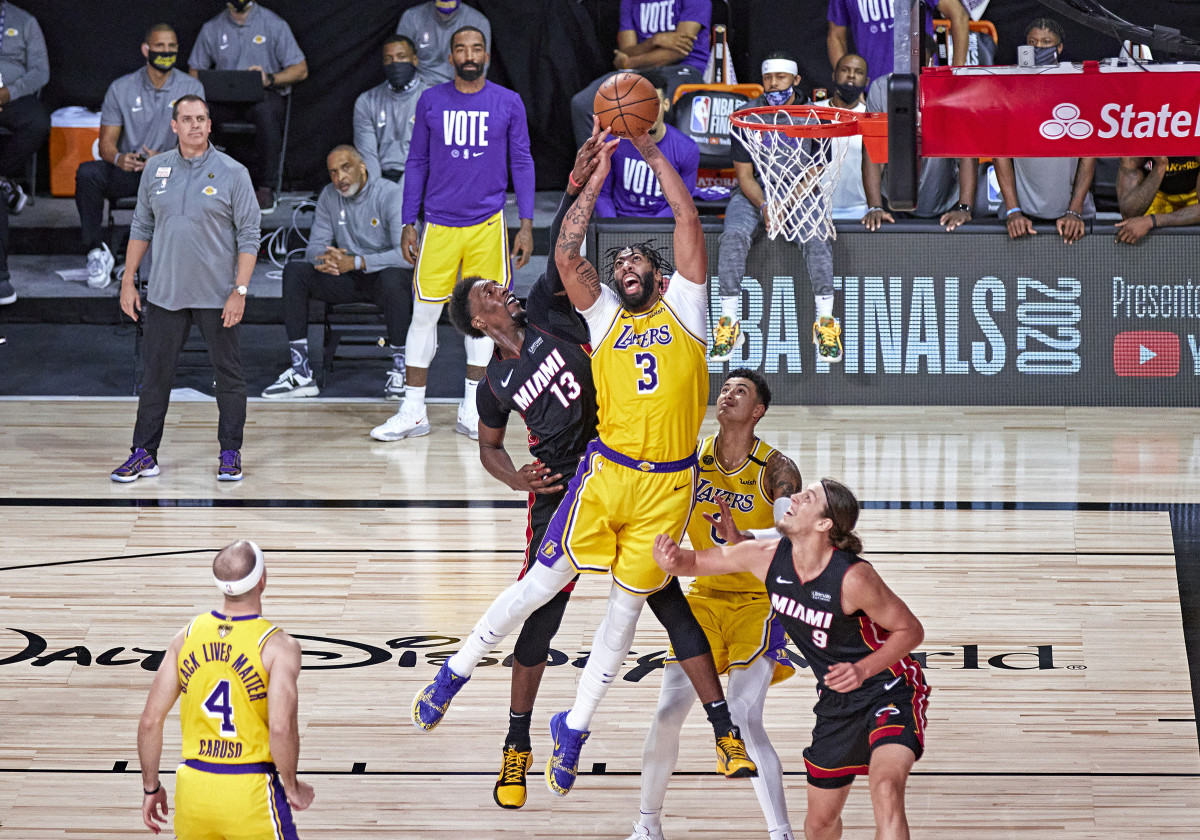
There is a reason that, unofficially, for many Americans, the pandemic began with the NBA’s March 11, 2020 shutdown. And even if so much of sports has been restored after everything was snatched away last March—and even if the rates are declining and the vaccines are here—what we don’t have back yet is order. There’s still so much disruption and uncertainty lurking. If the joy, agony, thrill and anxiety of sports came from not knowing the outcome, the comfort came from knowing the schedule and planning to be there. Now sports schedules feel more like a suggestion than a promise. Instead of the “* — If necessary” attached to Games 5, 6 and 7 at the start of a playoff series, we should have a “* — if possible” attached to every game of the regular season.
For decades we didn’t just count on times and dates, we counted on the rhythms. Olympic games at four-year intervals. College basketball madness in March. The azaleas in full bloom at Augusta National in early April. Horses running for the roses the first week in May. The Rose Bowl ushering in the New Year from Pasadena. None of them went off at the appointed time and/or place over the past 12 months.
For now they’ve been restored to their usual spots on the calendar. But if we’ve learned anything, it’s that we can no longer count on events going on with full participation and capacity crowds at their appointed time. The NBA staged its All-Star game, the players grudgingly went along with it, and then two of them (Philadelphia’s Joel Embiid and Ben Simmons) couldn’t play because they had been in the chair of a barber who tested positive for COVID-19. Fans even had to leave the Australian Open in the middle of a match before a five-day coronavirus lockdown went into effect at midnight. The oldest pact in sports, a ticket stamped with a date and time, feels broken. Perhaps it’s fitting that we’ve largely moved on to the era of app-based ticketing anyway.
There’s no way to download and replicate the experience of sports in person. My entire career in sports sprang from going to Lakers games at the Forum as a kid and deciding that when I grew up I had to be in that building, working in some capacity. How many kids missed their moments like that in 2020 and instead moved on to aspire to do something else in another field? What dates can parents point to on the calendar and tell their kids that’s when they’re going to the ballgame? That’s what’s still absent, even as leagues begin to make plans for partial attendance. Those plans all come with contingencies, primarily presuming there is not another spike in COVID-19 cases.
In retrospect, what seems so—choose the word, something in the range between naive and optimistic—was the notion of having a timetable in the face of a spreading epidemic. On March 12, 2020, with sports shutting down left and right, Major League Baseball announced it would “delay the start of the 2020 regular season by at least two weeks.” That same day, Major League Soccer and NBA commissioner Adam Silver said their leagues would take a hiatus of at least 30 days.
Of course, those idealistic deadlines came and went with no games being played. The initial targets were set with insufficient knowledge. We didn’t have a sense of how far the virus had spread, how easily it could be transmitted and by what method, how lethal a threat it posed, whether it even made sense to attempt to play sports in the midst of all this.
A year later we have games because we’ve added so much more information. And we’ve removed any remaining pretense of following the rest of our society. The games would come back as soon as it was feasible, not as soon as life returned to normal. Capitalism took precedence over true competition. (And it certainly stomped out the last of the NCAA’s whimpering case for amateurism. That argument’s over.)
If the ebbs, flows and statistical sanctity of a 162-game baseball season had to be condensed into 60 games in order to set the stage for the lucrative (and expanded) playoffs, so be it. If NBA players didn’t have to endure the true test of going into an enemy’s arena for a must-win playoff game and silencing a sellout crowd, so be it. If college football players could gather in a locker room and take the field before their schools had declared it safe for students to gather in a classroom to take a test, so be it. We saw, plainly, what sports have become: the quintessential television programming and a vital economic component.
That’s not how they started, of course. Sports were originally supposed to be live entertainment, for the people in the amphitheaters of ancient Greece or the Roman Colosseum. The basketball league that eventually morphed into the NBA was created to fill arenas on nights the hockey teams weren’t playing. It existed solely to get people in buildings.
In 2020, NFL stadiums in Las Vegas and Inglewood, Calif., that cost a combined $7 billion to construct ($750 million of that from taxpayers in Las Vegas) opened for business but not to paying customers. They were built to maximize revenues from luxury suites and instead opened at a time when we were reminded that merely going to games is a luxury in itself. It’s certainly not a necessity. Around the country, stadiums and arenas served best as sites for mass COVID-19 testing, vaccination or voting. The games went on without people, right after people went on without games.
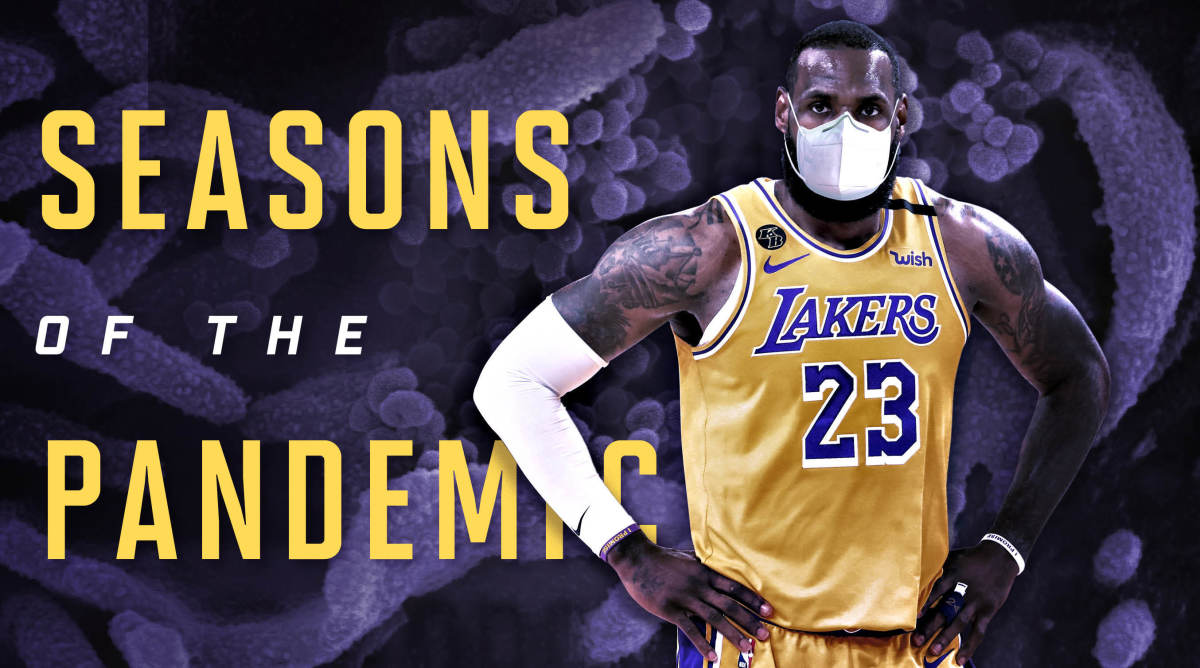
In the absence of sports we discovered that we could live without sports. It might not be preferable, but it was possible. And deprivation did not unleash pent-up demand. When sports returned in full force, with a dizzying 10-week stretch from early September to mid-November that featured the Kentucky Derby, the tennis U.S. Open, the Stanley Cup Finals, the WNBA Finals, the NBA Finals, the World Series and the Masters in addition to NFL and college football, the television ratings were down for all except the WNBA. When it came to television viewers, more people watched the third episode of The Last Dance (6.1 million) than watched the third game of the NBA Finals (5.9 million).
Some of the ratings declines were due to the shifting of sports taken out of their normal slots and placed against unusual competition, while fans were forced from their normal viewing patterns. But to some degree the ratings were not as high because the product wasn’t as good; without the backdrop and background noise of crowds, it just didn’t feel right.
After a year of examination and innovation, what we crave the most are the basics and the familiar. Take me out to the ballgame … buy me some peanuts and Cracker Jack. We miss the dotting of the “i” in Script Ohio. Singing “Sweet Caroline” in Fenway Park. The Battle of the Bands at the Bayou Classic. We want the collective, shared experience.
That is not to say that sports alone, without fans, cannot produce successes—even astounding ones. The NHL, NBA and WNBA brought their teams to bubbles and, after a WNBA game had to be postponed because of three inconclusive results, ultimately had no positives among tens of thousands of tests. After all three experiments were over, though, all of the constituents agreed they never wanted to endure the expenses or the isolation-induced mental strain of a bubble again.
Thankfully, that strain produced much more than just entertainment. By forming a bubble, the leagues weren’t just creating an environment, they were conducting medical and social experiments. Except most lab experiments don’t need to satisfy multiple constituents—most notably the leagues, the players’ associations and the television networks. Teams had an abundance of mental health care professionals on hand. Even though the NBA’s bubble on the Disney World campus outside Orlando was far removed from the main locations of the greatest civil unrest the country has seen since the 1960s, the turmoil remained at the forefront of every conversation.
“Add to that mental health component of what being in a bubble was like, but also frame it in the context of the social injustices that were going on. That was weighing in on players’ minds and having to balance that,” Sims says. “So we knew we needed resources to address that. You needed that professional touch, and that was key as well. That led [to] the discussion, is basketball going to detract from what’s happening in the movement? ... How do you address a social movement along with the professional goals that you’re trying to achieve?”
Indeed, once word of the police shooting of Jacob Blake in Kenosha, Wis., penetrated the bubble, the sporting world’s response then emanated from it. The shutdown started by George Hill and the Bucks quickly spread throughout sports.
Jammed together at Disney, players from different teams huddled to debate and decide the steps forward. And despite the frustration of not being able to do more than stage protests, despite the isolation from their families, the players managed to produce one of the more memorable playoffs we’ve seen.
“That really struck me, how much they balanced that out,” DiFiori says. And for a moment, he ventured beyond his area of expertise and became a fan. “From an outsider's point of view, it seemed like the games were very, very competitive basketball.”
The WNBA’s “Wubble” managed to mix even more overt politics—the players’ disagreements with then-Atlanta Dream co-owner Kelly Loeffler led to the “Vote Warnock” t-shirts that turbocharged Rev. Raphael Warnock’s campaign to defeat Loeffler in a U.S. Senate race—with an on-court product that became the only one of the displaced spring and summer sports to improve its championship television ratings. So much for sticking to sports. And players have said they do not think they could have produced the level of activism they did had they not all been so tightly packed together.
As for the science, Sims and DiFiori say that the more time that goes on, the more information they gather, the deeper and longer the data sets become. A study commissioned by six sports leagues released March 4 showed less than 1% of 789 athletes with COVID-19 had shown signs of inflammatory heart disease.
The doctors still don’t feel they have answers; they have updates. That’s in part because they aren’t shooting at a stationary target.
“At the beginning it was just the coronavirus, and now it’s the variants,” Sims says. “But we also have strategies for at least approaching what we need to do to keep people safe in the context of these unknowns.”
The uncertainty makes the road bumpy. The NBA has changed its protocols twice since the season started. The Wizards put their season on hold for nearly two weeks. Now that the league is outside of the bubble, it’s seeing what life is like for the rest of the sports world; there were 124 college football games canceled or rescheduled in 2020, according to a USA Today list.
The pandemic requires us to recalibrate how we view canceled games. They aren’t signs of the sport failing, they’re signs of the preventative measures working. When DiFiori talks about the medical objectives, he sounds less like a doctor and more like another type of emergency worker.
“We knew we were going to have positive cases moving forward, but how do we handle that?” DiFiori says. “How do we prevent the campfire from becoming the forest fire?”
“We're always, very, very conservative, very concerned that it could change at any time. [So if] player health and safety cannot be achieved, we're not playing.”
So far they’ve found a way to keep playing, more often than not. Sports found a way to keep on going. As we revisit this day from a year ago, we also need to relabel. Sports didn’t stop on March 11, 2020; they paused.
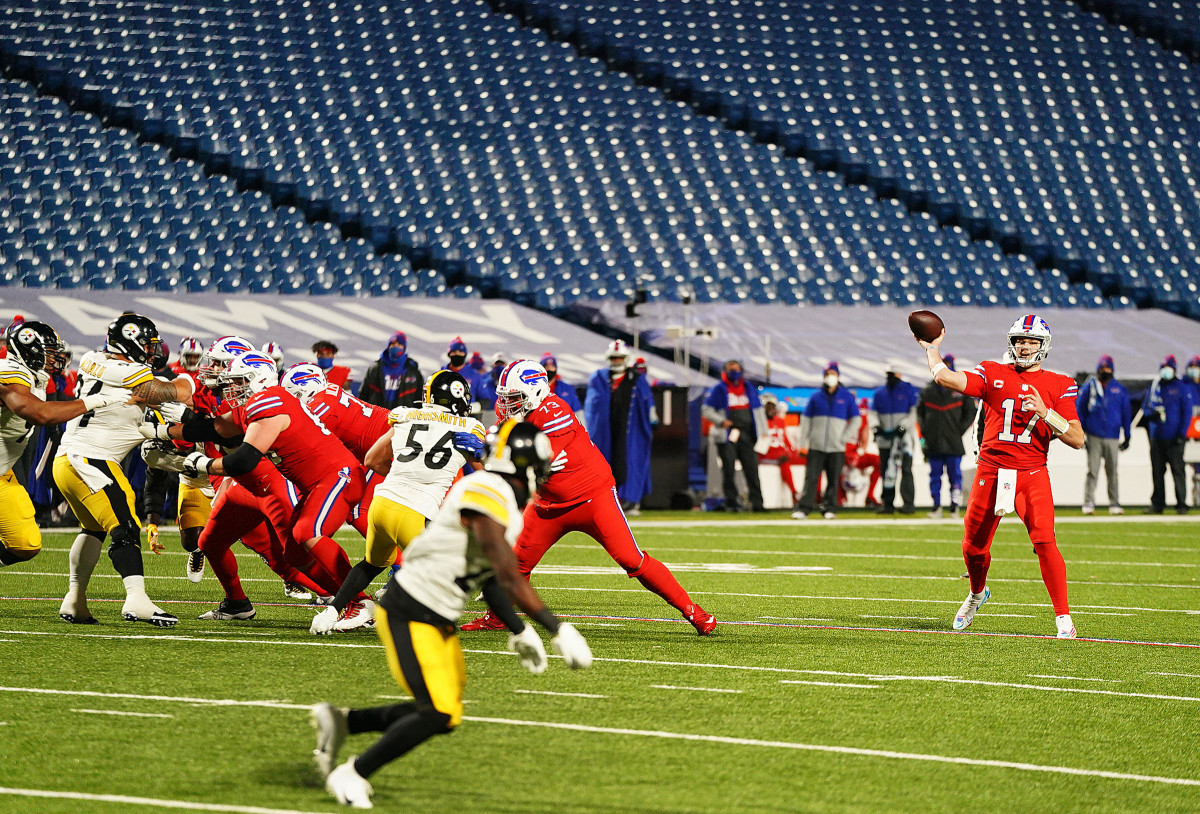
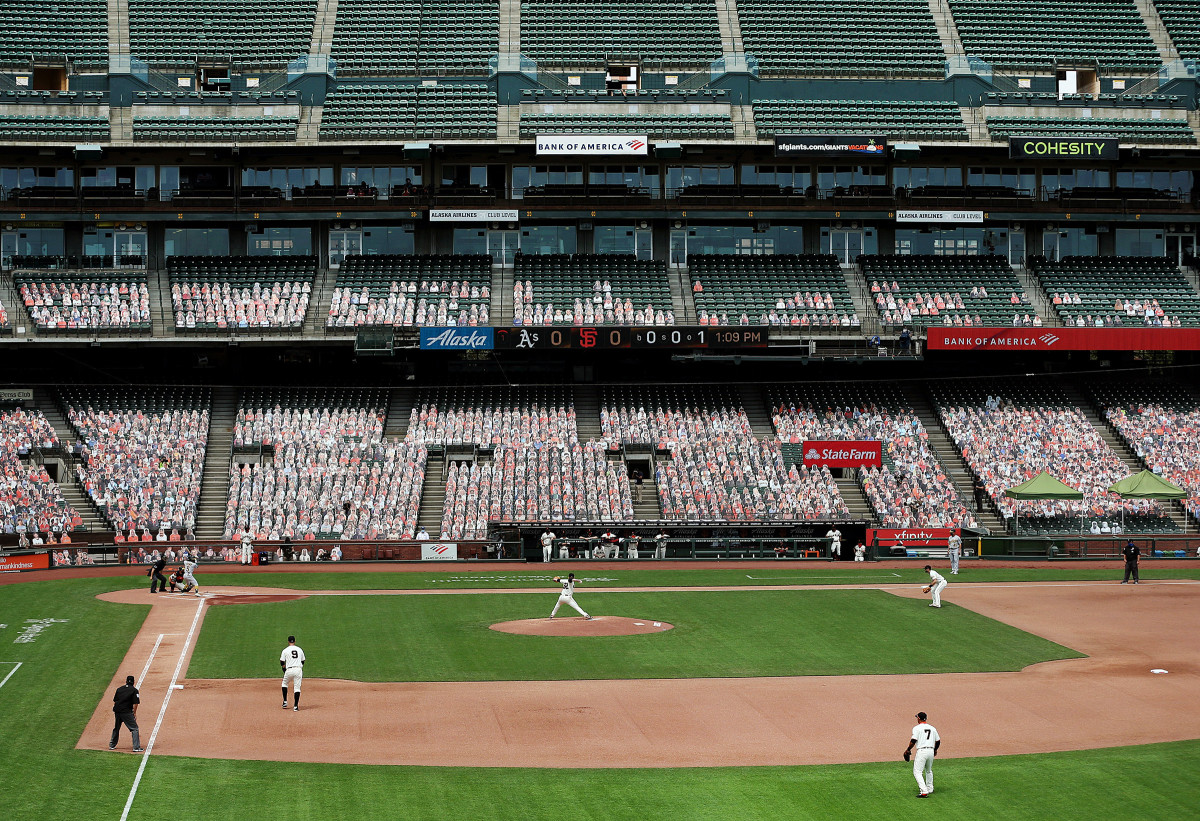
The only things that ended were the bubbles. And as sports rejoined society they helped, in some small way, to restore society. You can see some semblance of normalcy in the Twitter feed of Lina Washington, a television sports anchor and reporter at the ABC affiliate in Sacramento. It usually contains reports on the Kings, support for her hometown Suns and retweets of updates from around the sports world. There are games for her to cover again. Sacramento high schools just started playing football. Those sports updates have largely replaced what last summer was a stream of sorrow and warnings to take more precautions to curtail the virus.
“Having sports back has given me a distraction in terms of, ‘This is something I need to do to be an adult,’ ” Washington says.
March 18 is her birthday. It will also mark one year since she last saw her father alive, when he dropped her off at Phoenix’s Sky Harbor Airport.
I can be an emotional person & my dad would always tell me to be strong. He is the strongest man I’ll ever know. He supported me through everything: dance, track, college dance team, broadcasting. He taught me so much about life. He was very careful & his death was preventable. pic.twitter.com/qvfFeb7897
— Lina Washington (@LWashingtonTV) June 18, 2020
She can still see him in his black hat, black vest and black gloves. Robert Washington wore gloves because he was extra cautious about the coronavirus. He knew he carried a higher risk as a diabetic who had survived prostate cancer. He also felt he needed to stay on his employer’s payroll in order to maintain the health insurance that helped him pay for his insulin. So when the casino where he worked as a security guard reopened, he went back. Washington is convinced that the lack of masks or social distancing at the casino exposed her father to the coronavirus. He died of COVID-19 complications on June 11. Lina Washington launched her own media campaign, part awareness and part exposé, spreading the word in interviews everywhere from Good Morning America to People magazine. Her father’s story is a summary of the flaws in our health care programs, our social services and our haphazard coronavirus practices.
Robert Washington was the one who instilled a love of sports in Lina when she was a growing up in the Phoenix area. He was the one she called for conversations as she drove home from hosting her Sunday night sports shows in Sacramento. So sports will always remind Lina of her father. They just aren’t the be-all, end-all anymore.
“I also see it for the big picture,” she says. “I see it through a different lens, because I’ve been impacted in the worst way.”
Stopping isn’t the answer. Not for sports, not for her. She still has a job to do, she still has career goals to seek.
“I need to move forward and do something positive and make my dad proud with this energy, with this grief,” Washington says. “Crying about it isn’t going to bring him back.”
Everyone within the sports ecosystem—the doctors, the players, the fans, the executives, the media and the mourning relatives among them all—is searching for the right balance. Sims and DiFiori helped craft a 113-page guidebook for the NBA bubble. Medical science can’t give us the guidance for how to navigate this current state of sports, this attempt to account for what we have lost, what we are missing and what we still have. At least not until it brings us where we yearn to be: together.
J.A. Adande is the director of sports journalism at Northwestern University's Medill School of Journalism, Media, Integrated Marketing Communications and has been a staff writer at ESPN.com, the Los Angeles Times, the Washington Post and the Chicago Sun-Times.
